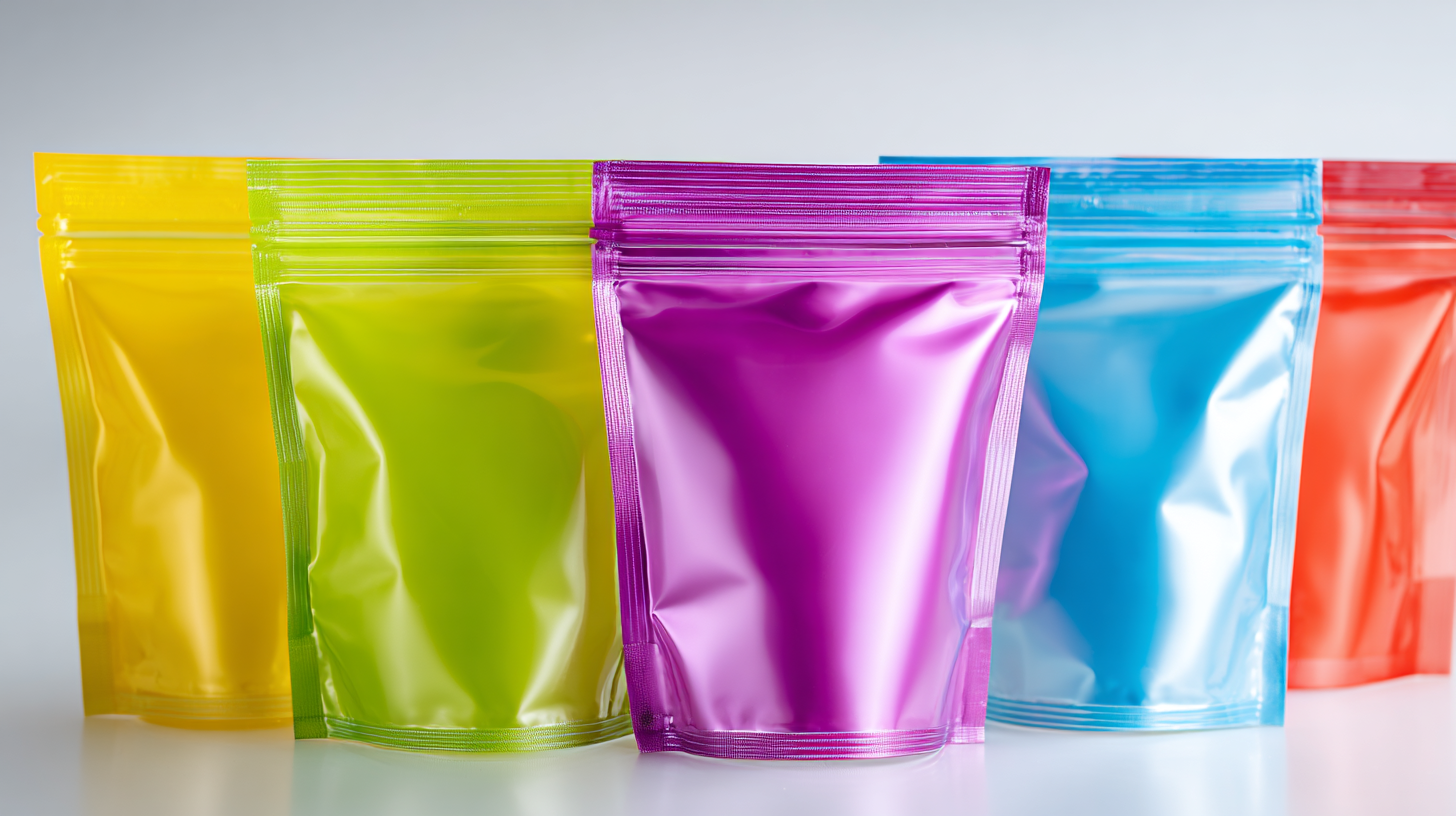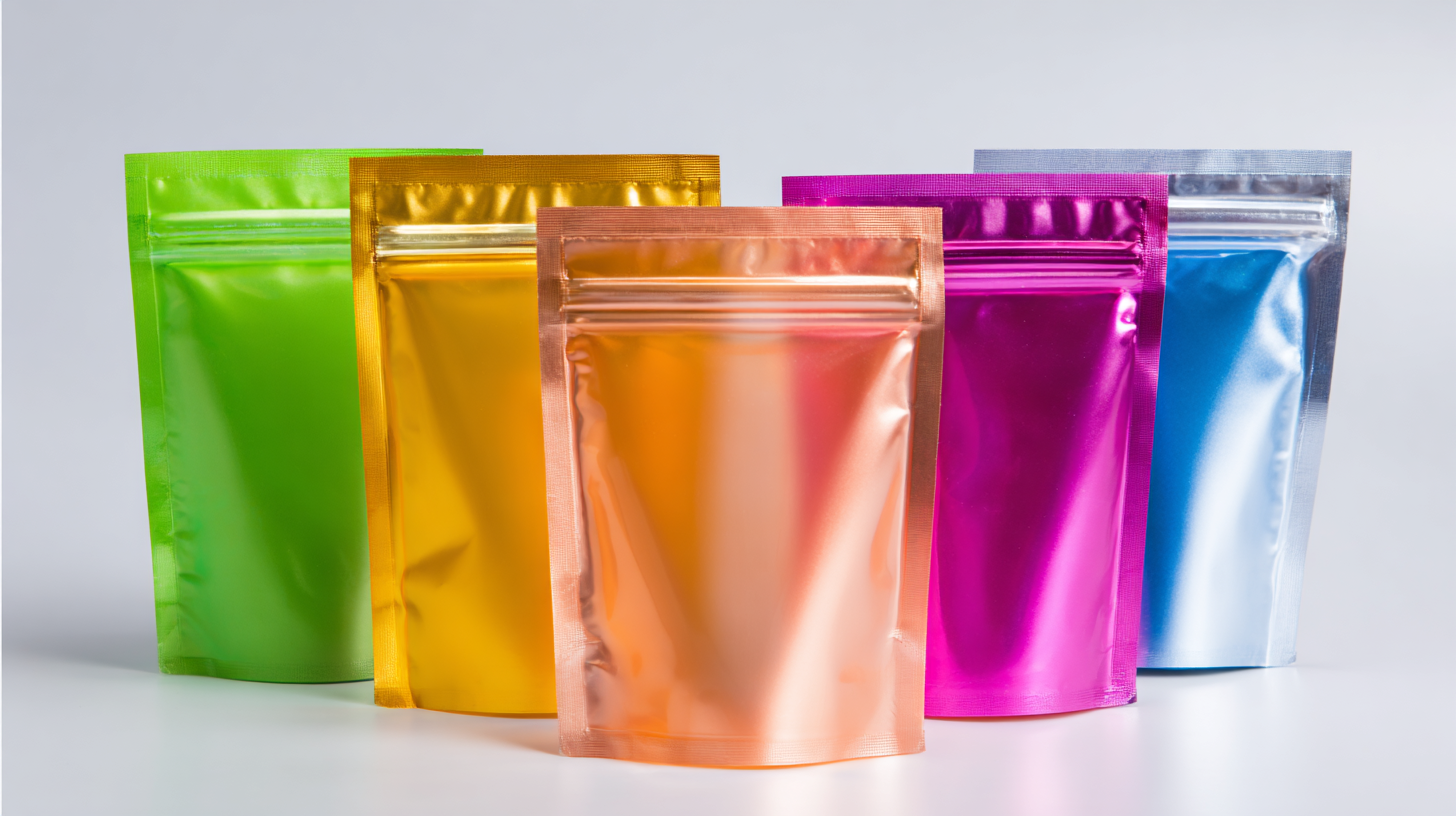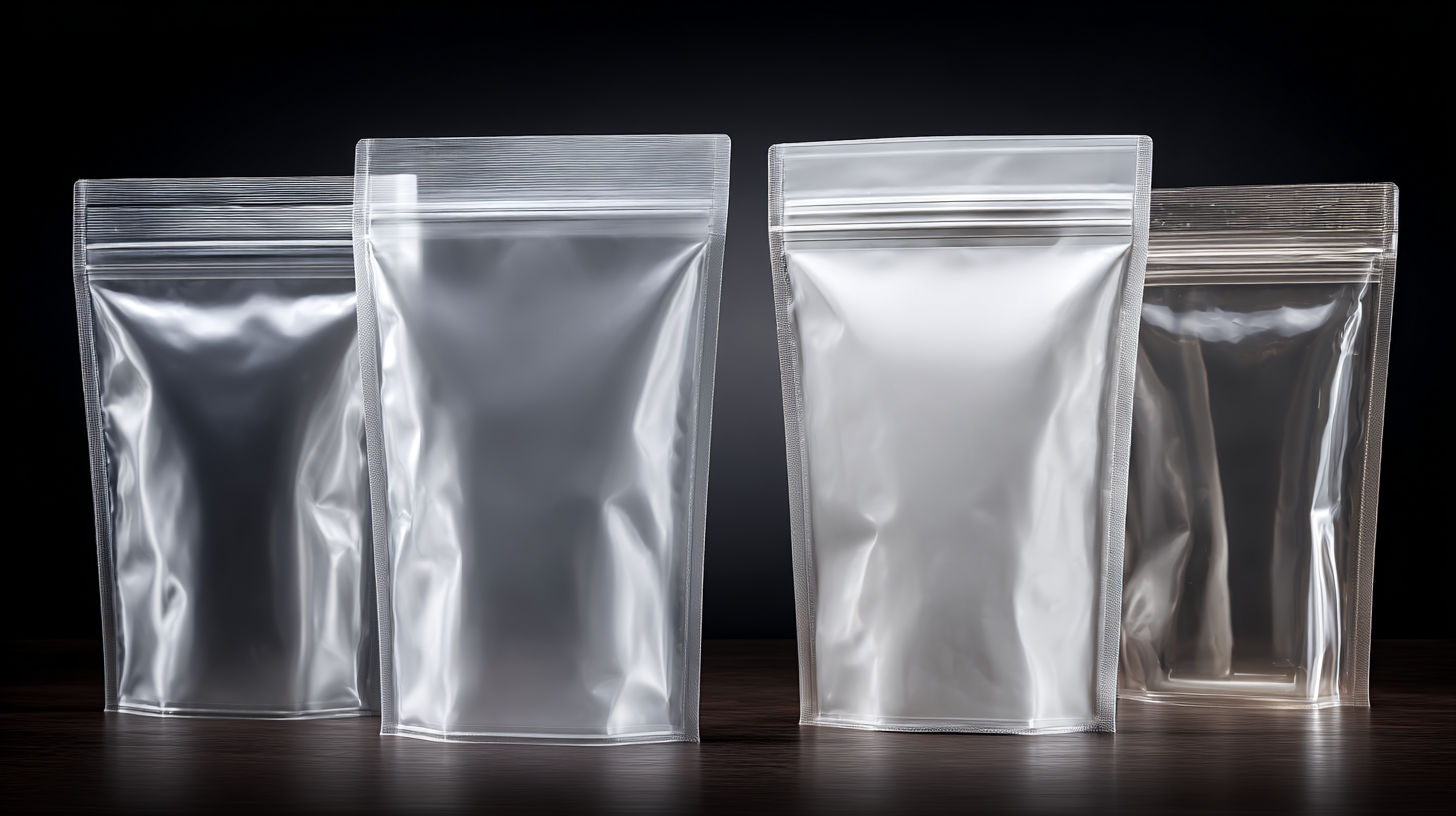- Phone:+86 15218629499
- Phone: +86 15766990063
- E-mail: Yzprinting01@163.com
In today's competitive market, choosing the right packaging is crucial for businesses aiming to enhance product visibility and consumer appeal. Plastic pouch packaging has emerged as a popular choice across various industries, thanks to its lightweight, cost-effective, and sustainable attributes.

According to a report by MarketsandMarkets, the global flexible packaging market, which includes plastic pouches, is projected to reach USD 290.8 billion by 2026, growing at a CAGR of 4.5% from 2021 to 2026. This growth highlights the increasing demand for convenient and eco-friendly packaging solutions.
As more businesses recognize the benefits of plastic pouch packaging, understanding the various types and their applications becomes essential for making informed decisions that align with specific business needs and consumer preferences.
When selecting plastic pouch packaging for your business, it is crucial to understand the various types available in the market. Different materials play a significant role in the functionality and appeal of packaging solutions. Plastic pouches, for example, often come in recycle-friendly options and non-recyclable formats, catering to diverse sustainability goals and consumer preferences. Depending on the type of product being packaged, businesses may choose flexible plastic options that offer durability and resistance to external elements, making them ideal for food items and other perishable goods.

Additionally, the printing technology used in plastic pouch packaging can greatly enhance branding and consumer engagement. Digital printing, for instance, allows for high-quality graphics and customization, ensuring that products stand out on store shelves. Understanding these factors will not only help in selecting the right packaging but also in aligning it with market trends. The flexible plastic packaging sector is anticipated to grow significantly, thus investing in appropriate packaging solutions is essential for staying competitive and meeting evolving consumer demands.
When it comes to selecting plastic pouch packaging for your business, identifying key factors is crucial for ensuring it meets your needs. Firstly, consider the material of the pouch. Different types of plastics offer varying levels of durability, barrier protection, and printability. For food products, for example, it’s essential to choose high-quality, food-grade materials that can preserve freshness and extend shelf life.
Another critical factor is the size and shape of the pouch. Ensure it complements your product well while appealing to your target audience. A well-designed pouch can enhance brand visibility and influence customer preferences. Therefore, conduct thorough market research to understand what packaging style resonates best with your consumers.
**Tips**: When assessing your pouch options, utilize mock-ups or prototypes to visualize how your product will look in the packaging. Additionally, compare suppliers, as pricing, minimum order quantities, and lead times can significantly impact your operations. Always prioritize sustainability; consider eco-friendly options that can enhance your brand image while appealing to environmentally conscious consumers.
| Key Factors | Description | Importance Level |
|---|---|---|
| Material Type | Choose between polyethylene, polypropylene, or other materials based on durability and barrier properties. | High |
| Size & Dimensions | Select sizes that meet your product's volume and ensure efficient shelf space utilization. | Medium |
| Closure Type | Decide on zippers, tear notches, or resealable options based on customer convenience. | High |
| Printability | Consider the ability to print designs or information to enhance branding and product visibility. | Medium |
| Sustainability | Prioritize eco-friendly materials to cater to environmentally conscious consumers. | High |
| Cost | Determine budget constraints while balancing quality and functionality. | Medium |
When businesses opt for plastic pouch packaging, they often encounter a range of challenges that can impact their operations and product presentation. One common issue is the durability of the packaging. Many pouches may not withstand varying temperatures or rough handling, which can lead to product damage. Additionally, businesses might struggle with finding pouches that provide a proper barrier against moisture, light, or contaminants, essential factors for preserving the quality of the contents.
Another significant problem is the environmental impact of plastic packaging. As consumers become more eco-conscious, businesses face pressure to adopt sustainable practices. The dilemma of choosing recyclable or biodegradable options often surfaces, leaving companies to weigh the cost-effectiveness against their commitment to sustainability. Lastly, achieving the right design and functionality to appeal to consumers while maintaining cost efficiency can be challenging. Packaging needs to stand out on shelves but also remain practical for storage and transport, creating a balancing act for businesses to navigate effectively.
When evaluating the environmental impact of plastic pouch packaging options, it’s essential to consider the lifecycle of these materials. Research shows that flexible packaging, which commonly includes plastic pouches, accounts for approximately 19% of the total packaging market by weight. This presents both opportunities and challenges, as the production and disposal processes of plastic can significantly affect carbon footprints and waste management systems. A 2021 study from the Flexible Packaging Association (FPA) notes that flexible packaging uses 40% less material than rigid packaging, contributing to lower energy consumption and reduced emissions during transportation.
Moreover, advancements in bioplastics and recyclable materials are reshaping the environmental landscape of plastic pouches. According to a 2022 report from Smithers Pira, the market for sustainable flexible packaging is expected to grow at a CAGR of 6.2% through 2027, driven by a rising consumer demand for eco-friendly solutions. Businesses are increasingly able to mitigate their environmental impact by choosing pouches made from recyclable or compostable materials, enhancing their sustainability credentials while potentially appealing to conscious consumers.
Understanding these factors is crucial for businesses looking to align their packaging choices with environmental responsibility.
When selecting the right plastic pouch packaging for your business, it’s crucial to incorporate best practices for testing before making a commitment. Consider the specific needs of your product and how it interacts with potential packaging materials. For instance, recent trends in consumer behavior show a heightened focus on quality and compliance, as seen in the stringent demands from consumers in the sanitary product industry. Testing for durability, safety, and compatibility with your product will not only ensure customer satisfaction but can also safeguard your brand's reputation.

Tips for effective packaging selection include conducting thorough material tests to ensure they meet necessary regulations and performance standards. Additionally, engage with your customer base to gather feedback on their preferences and experiences with your current packaging solutions. This data can guide you in choosing materials that not only align with quality expectations but also resonate with consumer values, enhancing your brand’s credibility in a competitive marketplace.
Another important aspect is to consider your branding within the packaging. A well-designed logo on your plastic pouches can significantly enhance visibility and brand recognition. Testing different design mockups with focus groups can provide insights into what captures attention and appeals to your target audience. Consistent and compliant packaging will foster trust and encourage repeat purchases, setting your business apart in the often crowded retail environment.
